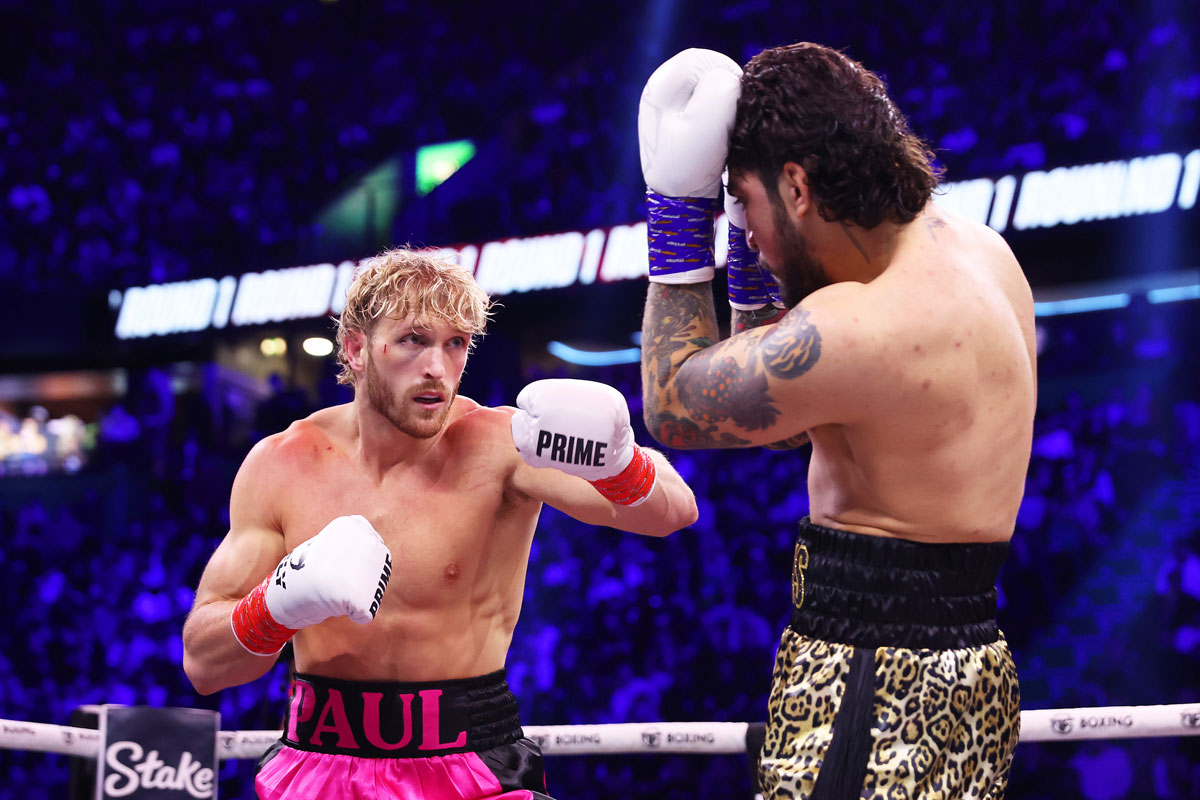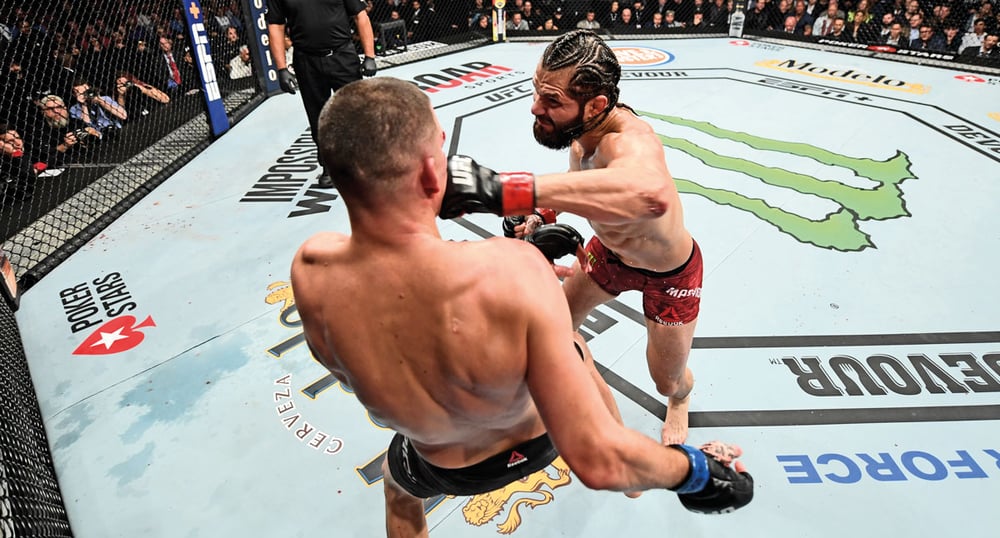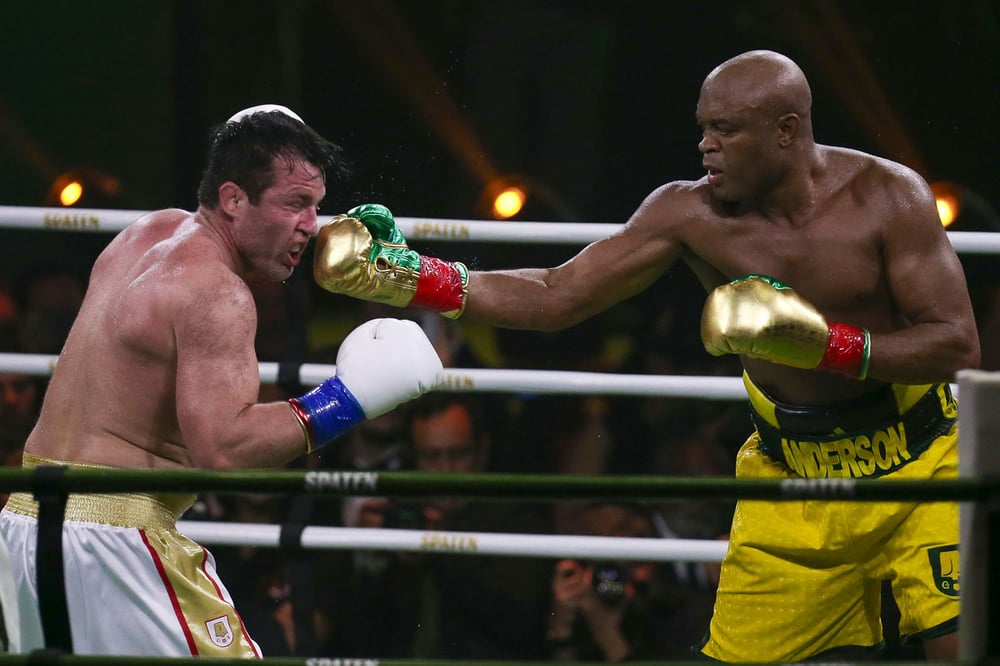
Issue 206
July 2024
Were you more miffed when McGregor versus Chandler was canceled or when Paul versus Tyson was postponed? Your relative annoyance levels might decide whether your allegiances lie with entertainment or competition. When it comes to combat sports, boxing was the one that started it all. The sport's greats used their skill, intelligence, and overall aura to turn their fights into a worldwide phenomenon, captivating the minds of millions. However, boxing in the modern era is becoming dominated by a different kind of fighter: internet celebrities. Influencer boxing, led by personalities like KSI and the Paul brothers, has come as a knock to the establishment and asked the question about whether this spectacle is a negative element to MMA since some of the sport's former stars are lacing up the 10oz gloves.

When compared to regular boxing, influencer boxing has an advantage off the bat because of the mass followings each influencer has before fighting. They’re entertainers, so the level of promotion that goes into an influencer event is much more likely to create comparably higher numbers than a traditional boxing or low-level MMA event promotion. This disruption is where some of the disgruntlement in some camps comes from, but it may not be bad for either.
PUNCHING AHEAD
Many would argue that this new format of combat sport is a breath of fresh air for the average MMA fan. The lack of traditional fighting skills compared to seasoned professionals can be overlooked, thanks to its entertainment value. Ben Davis, a boxer at the influencer boxing promotion Misfits, agrees: “I think Misfits is exactly what the world of boxing needs. It puts pressure on traditional boxing to evolve and deliver products and fights people want to see and allows for more avenues for fighters to receive compensation, notoriety, and build their careers. While there are many differences, Misfits does an excellent job of sourcing creators who have immense organic followings and tapping into those diverse markets. Traditional boxing can’t do that as effectively, and the interest levels vary massively from event to event. In contrast, Misfits is positioned to create significant intrigue with every single event and create a lot of home-grown stars like Salt Papi, who’s been able to gain a lot of respect from the traditional boxing world.”

If it lifts boxing, perhaps it will lift MMA, but the issue is that latter has a far greater barrier to entry. There's a reason you don't see many influencer MMA promotions, yet. Influencer boxing lacks the comprehensive skill set required to excel at MMA. Unlike boxing, MMA fighters must master a multitude of disciplines, including striking, ground game, wrestling, and grappling. The multifaceted nature demands a higher level of versatility and adaptability. MMA fighters then have to become proficient in complex situations where they integrate these skills seamlessly in ways that fans love. This skills gap highlights the superior athleticism and dedication required in MMA compared to the more singular focus of boxing. It also means there’s unlikely to be too many influencer MMA fights unless they’re more for novelty value and involve juggernauts like Eddie Hall rag-dolling featherweight twins in 2V1 exhibition bouts.
A THREAT TO THE ESTABLISHMENT
What does the average boxing trainer in the trenches think about influencer boxing? Steve Cranson, the DiSE boxing lead and head boxing coach at Gateshead College, UK, said: “My opinion? I don’t think it’s a good thing at all. These individuals haven’t served their apprenticeship. If you are a good boxer, you are a good boxer, whether you are an influencer, street vendor, firefighter, or bus driver. My issue is that these people are reaping huge financial rewards not through their boxing ability but because of their social media status. Most people have no idea that boxing is a sport where you don’t have to be very good to be a professional boxer. It is no secret in the sport that there are a lot of professional boxers out there who couldn’t even win a regional amateur title. To become a professional boxer, you must pass a gym test, pass a medical and a brain scan, and most importantly, be able to sell tickets so that you can pay the journeymen who you will be boxing for the first year or so of your professional career while you learn the professional game. The monetary opportunities for the influencers are created because of the support given by their followers, so I think their infamy creates the big money opportunities. The new inexperienced professional boxer hasn’t got that following, so that cash wouldn’t be available to them.” Cranson raises an interesting point about the problem influencer boxing creates for traditional boxing.
Combat sports are business. No one likes getting punched in the face for free, so the younger up-and-coming fighters aren’t getting enough exposure because they aren’t bringing in the money. The champions of the sport are the selling point to fans, but fans rarely show up to the undercard in large numbers. Just look at the crowds at Anthony Joshua’s early fights. There are often more empty seats than full ones for an Olympic gold medalist.
Boxing/MMA journalist Aaron Morris has a perspective on this: “With regards to promoting younger athletes, I believe that promotions should be doing everything in their power to promote up-and-coming athletes - but that isn’t going to make the likes of Matchroom any money, which is what it all boils down to. Influencers have also impacted the sport - especially YouTubers and reality TV stars - which I believe phases out up-and-comers even more. People would rather tune in to watch two OF stars with six months’ training scrap than two lads who have been causing havoc on the regional circuit because the influencers are guaranteed to generate views and PPV buys.” Whether MMA and boxing purists like it or not, it appears that influencer boxing is now part of the combat sports landscape, and there are arguments both for and against its continued development alongside traditional structures.
POSITIVE INFLUENCES OR JUST INFLUENCERS?
The rise of influencer boxing has also brought its share of controversies that may impact the MMA landscape. During an influencer boxing event, OnlyFans star Daniella Hemsley exposed her breasts in celebration after defeating Aleksandra Daniel. Boxing pros and promoter Eddie Hearn criticized her, arguing that she undermined years of female sports progress. Sameenah Toussaint, a young boxer who competed at the Commonwealth Games, voiced her concerns about influencers like Hemsley being fast-tracked into high-profile events, saying, “We need positive influences - not influencers.” Considering how well-respected it has become, you can only hope this never happens in women’s MMA.
While some see influencer boxing as a way to bring new fans to the sport, others, like Toussaint, worry it could diminish the accomplishments of professional athletes who have trained for years. Such is the case with past-their-prime MMA fighters, such as Tyron Woodley (a Div 1 wrestler), often tossed in the ring as cannon fodder for influencer boxers. It's hard to blame them, considering there are earnings to be made, but to some, it may reflect poorly on their overall skill set.
SETTLING BEEF
The Nate Diaz vs. Jorge Masvidal boxing match presents a unique opportunity for former high-level MMA fighters to settle beef in a controlled and entertaining environment. Both fighters, known for their fierce competitiveness and storied histories in the octagon, bring a level of intensity and personal rivalry that captivates fans.

Transitioning to boxing to resolve their differences adds a fresh dynamic to their rivalry and showcases a positive outlet for conflict resolution. This approach allows MMA fighters to address personal grievances through their skills and determination, providing closure and entertainment simultaneously. By channeling their disputes into the boxing ring, Diaz and Masvidal demonstrate how professional fighters can manage conflicts and promote a culture of respect within the MMA community. This matchup not only thrills fans but also reinforces the values of discipline and controlled aggression central to martial arts. That positive attitude was in play when Chael Sonnen and Anderson Silva went the distance in an exhibition boxing match on 15 June 2024. They’d fought twice for the UFC middleweight belt, a rivalry that will always be a big part of both fighters' career highlights. The boxing match was a chance to honor that legacy.

“I know some said the match should have been more aggressive, but each fight has its own dynamic,” Silva wrote in Portuguese. “I chose to be in the ring with an opponent so important in my history. I could have fought to win, but I preferred to do this as a tribute to our history, and that’s why I didn’t win the belt.” When you look at it from Silva’s swan song perspective, it’s moving enough to bring a tear to a glass eye and unquestionably offers an avenue to uplift all combat sports.
INFLUENCER BOXING: A RAGE-BAIT SPECTACLE
The concept of influencer boxing might seem like a canary in the coal mine for traditional boxing and a potential threat to MMA. Still, it hasn’t diminished either of these sport’s popularity. Despite the lack of traditional boxing skills, the spectacle draws enormous audiences and generates significant revenue. In today’s content-driven world, influencer boxing thrives on the rage-bait model. People are drawn to these events not for their skill or athleticism but for the sheer spectacle. It’s the same reason many watch the Kardashians or Piers Morgan – the content is loud, annoying, and impossible to ignore. While traditional boxing and MMA fans may lament the loss of artistry, the new generation of viewers is captivated by the drama and entertainment value.
Despite the controversies, some influencer boxers have shown dedication to their training, sometimes working as hard as professional fighters. The appeal of watching two people slug it out is universal, and influencer boxing simplifies the sport to its most basic premise: two people trying to knock each other out. It’s a theme that is good for combat sports in general. This accessibility, combined with the influencers’ massive followings, ensures that the phenomenon of influencer boxing is here to stay, bringing both benefits and challenges to the world of combat sports. And if it offers the retired MMA stars an avenue to slug out some retirement dollars in front of their fans, it can only be good for both sports. After all, McGregor was kind of the first fighter to do it with Mayweather.










